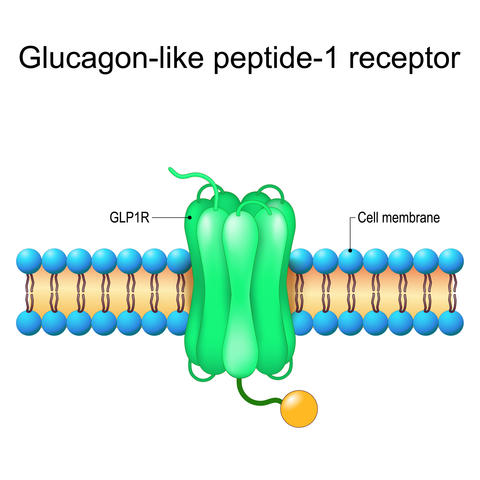Glucagon-like peptide-1 (GLP-1) receptor agonists before upper gastrointestinal (GI) endoscopy are not associated with increased risk of aspiration
Alkabbani W et al, BMJ. 2024;387:e080340
GLP-1 receptor agonists delay gastric emptying which may interfere with endoscopic procedures of the upper GI tract. However, the risk of aspiration during upper GI endoscopy was not increased in this comparative cohort study of diabetic patients treated with GLP-1 agonists as compared to control medication (SGLT-2 inhibitors). Intake of GLP-1 receptor agonists was rather associated with a 2-fold increased risk of discontinuation of the procedure, which was possibly due to delayed gastric emptying.
Objective: To assess whether use of glucagon-like peptide-1 (GLP-1) receptor agonists before upper gastrointestinal endoscopy is associated with increased risk of pulmonary aspiration or discontinuation of the procedure compared with sodium-glucose cotransporter-2 (SGLT-2) inhibitors.
Design: Cohort study.
Setting: Two deidentified US commercial healthcare databases.
Participants: 43,365 adults (≥ 18 years) with type 2 diabetes who used a GLP-1 receptor agonist or SGLT-2 inhibitor within 30 days before upper gastrointestinal endoscopy.
Main outcome measures: The primary outcome was pulmonary aspiration on the day of or the day after endoscopy, defined using diagnostic codes. The secondary outcome was discontinuation of endoscopy. Risk ratios and corresponding 95% confidence intervals (CIs) were estimated after fine stratification weighting based on propensity score.

Results: After weighting, 24,817 adults used a GLP-1 receptor agonist (mean age 59.9 years; 63.6% female) and 18,537 used an SGLT-2 inhibitor (59.8 years; 63.7% female). Among users of GLP-1 receptor agonists and SGLT-2 inhibitors, the weighted risk per 1000 people was, respectively, 4.15 and 4.26 for pulmonary aspiration and 9.79 and 4.91 for discontinuation of endoscopy. Compared with SGLT-2 inhibitor use, GLP-1 receptor agonist use was not associated with an increased risk of pulmonary aspiration (pooled risk ratio [RR] = 0.98, 95% confidence interval [CI]: 0.73–1.31), although it was associated with a higher risk for discontinuation of endoscopy (pooled RR = 1.99, 95% CI: 1.56–2.53).
Conclusions: In this comparative cohort study, no increased risk of pulmonary aspiration during upper gastrointestinal endoscopy was observed among adults with type 2 diabetes using glucagon-like peptide-1 (GLP-1) receptor agonists compared with sodium-glucose cotransporter-2 (SGLT-2) inhibitors within 30 days of the procedure; however, GLP-1 receptor agonists were associated with a higher risk of discontinuation of endoscopy, possibly owing to a higher risk of retained gastric content. In the absence of evidence from randomized trials, these findings could inform future practice recommendations on the preprocedural protocol for patients requiring endoscopy.